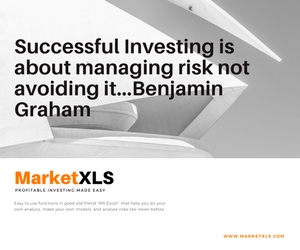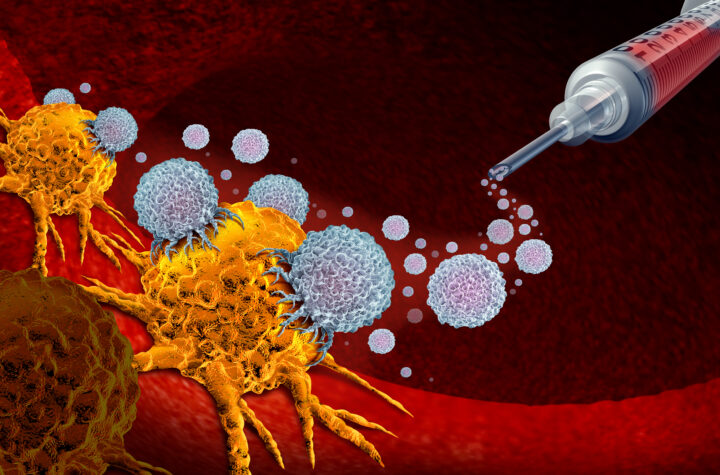After recording world beating growth through most of the early 21st century, shares of Novo Nordisk hit a wall in 2015. A stock that only went up for years suddenly seemed adrift on a stormy sea of media criticism. With price pressure increasing, and media scrutiny threatening the company’s bread and butter, many analysts believed that Novo Nordisk’s best days were behind it. But a new FDA approval could change everything. Welcome to the Age of Ozempic.
For years, it seemed that Novo Nordisk ($NVO) could do no wrong. A Danish company focused primarily on treatment for diabetes, the company simply seemed to be in the right place, at the right time. With diabetes rates skyrocketing across the globe, more and more patients needed Novo’s products. In addition, type II diabetics, Novo’s core patients, are notoriously tough to treat (A report published by the National Institute of Health in 2013 demonstrated that only 19% of diabetics successfully control all three critical disease markers). This challenging prognosis for an ever increasing diabetic population meant that Novo was constantly able to introduce expensive innovations into a medical market with many unmet needs. These factors resulted in an explosion in share price for the formerly obscure company from Denmark. An investment in $NVO in 2005 would have yielded an 860% return by 2015.
One of Novo’s favorite tactics to constantly grow profits was simply to raise prices on a regular basis. In a market of never ending demand, they seemed to get away with it. In fact, between 2006 and 2016, Novo increased the price of Novolog, one of it’s more popular insulins, by 290%.
The reason for these never ending price increases? Well, they could.
 Then, suddenly, one day, they couldn’t. By 2016 high insulin prices were becoming a focus of investigative reporters, and a popular political pinata. With middle class incomes stagnating, health insurance deductibles growing, and an angry media beating down their door, the pressure finally got to Novo Nordisk.
Then, suddenly, one day, they couldn’t. By 2016 high insulin prices were becoming a focus of investigative reporters, and a popular political pinata. With middle class incomes stagnating, health insurance deductibles growing, and an angry media beating down their door, the pressure finally got to Novo Nordisk.
Now, one of those insulin-makers, Danish pharmaceutical company Novo Nordisk, says it will limit all future drug list price increases from the company to single digit percentages. Novo Nordisk made the announcement on its Website on Nov. 30, but only drew attention to it on Monday.
Novo Nordisk also pledged to keep out of pocket costs low to consumers through patient assistance programs and cheaper forms of insulin, as well as help change up the complicated drug pricing system.
These changes were great for patients, and necessary publicity moves for the beleaguered company. But freezing prices and providing discounts rarely helps the bottom line. Novo’s stock halted it’s upward expansion, and has been in a holding pattern for several years.
BEYOND INSULIN
Most of the media controversy concentrated on the price of insulin; a medicine considered fundamental for the survival of millions of diabetic patients. But the Media’s myopic obsession with insulin prices obscured many of the critical advances that $NVO was making on the research front.
There are two types of diabetic patients. The smaller group of patients are known as Type I diabetics. In Type I diabetes the patient’s pancreas produces no insulin at all. Why this happens is still not fully understood, but these patients are often lifelong diabetics who need insulin to survive.
The more prevalent kind of diabetes, the kind that has grown exponentially along with obesity rates and the ageing of America, is Type II diabetes. Type II diabetes is a progressive, chronic disease, whereby the patient’s pancreas slowly shuts down. Many Type II patients will need insulin sooner or later, however, there are many opportunities to slow this decline through medication and lifestyle changes. Scientists have long cooked up pharmaceuticals that coax the pancreas into producing insulin, or enable the body to more efficiently use what little insulin it is producing.
One major advance that Novo achieved in 2010 was the approval of Liraglutide, known by the brand name Victoza. Victoza was a breakthrough in a new category of diabetes medicine, the GLP-1 agonist. Although Novo was not the first mover in this field of competition, Victoza brought several meaningful advantages to the market, and the drug took off. By the first half of 2017, Victoza was on pace to hand in more than $3Billion in annual sales, and accounted for 20% of $NVO’s total revenue.
While Victoza is not insulin, it is still an injection. This limit’s the drug’s appeal for many type II diabetic patients. Even though the needle is tiny, and the pinprick pain is less than a mosquito bite, many patients will try every pill available before resorting to an injection. Novo, no longer able to raise insulin prices at whim, needed to think bigger. Victoza’s clinical results were powerful, but the agent could only grow so big as long as it was an injection. What if these same benefits could be provided in a pill form?
ENTER: OZEMPIC
With Novo’s insulin franchise under constant scrutiny, and Victoza growth slowing, Novo needed to be dealt a good hand to reanimate the moribund stock price.
Now it looks like Novo has had an ace up its sleeve the whole time. On March 20th, 2019, Novo filed for approval for a pill form of Ozempic, it’s latest GLP-1 Agonist. This means that Novo would be the first company to offer the proven benefits of GLP-1 therapy without any pesky injections.
As if this good news weren’t enough, just days later Novo continued its clinical rampage. On March 23rd, Novo published data in the Journal of the American Medical Association directly comparing it’s new oral GLP-1 against Januvia, an extremely popular, established drug with a different method of action. Ozempic won, hands down. Not only did Ozempic produce better blood glucose control, but Ozempic also caused meaningful weight loss vrs. Januvia.
This means that on the day of it’s launch, Novo will enjoy some powerful benefits that could make Ozempic one of the fastest drug launches in history.
1. Novo already has an entrenched, specialized diabetes sales force and strong relationships with insurers.
2. Many prescribing physicians already feel comfortable with the clinical profile of GLP-1 Agonists, because they have used the injected form for years. Translating those benefits to a pill akes it all the easier to write this prescription.
3. Oral Ozempic will be born on day 1 with conclusive positive data published in the most important medical journal in the United States.
4. By bringing a totally new form of treatment to the market, Novo may finally succeed in shifting the media narrative from “Greedy Pharma Giant” to “Daring Innovator.” Patients will feel relieved that Novo has offered one more diabetes treatment option that does not involve a needle.
BUT WAIT, THERE’S MORE!!!
One of the noteworthy characteristics of the GLP-1 drug class has always been weightloss. You would think that this would be a very big deal, given the obesity crisis consuming the world.
In fact, Novo has attempted to capitalize on this characteristic of the GLP-1 class. Novo launched a special kind of Victoza, under the brand name Saxenda, just for weight loss. Novo found that, at a higher dosage, this medication could cause reliable weight loss without affecting blood sugar. With great expectations, Novo launched Saxenda aimed at patients who were merely obese, even those without diabetes.

It didn’t work. After years of strenuous marketing, Saxenda sales in North America only added up to 5% of Novo’s total business. While new marketing tactics did help the agent grow by 39% in 2018, these sales results have been disappointing by any measure. In the middle of a global pandemic of obesity, Novo has failed to sell much of a medication that is proven to help curb obesity. How can this be?
The main problem that Novo ran into was insurance payment. Most insurers simply refuse to pay for you to look better in your summer bikini. Although the connection between obesity and general health has been well documented by thousands of studies, without specific data linking a medication to tangible health benefits, health insurers can be more stubborn than an angry donkey. And most patients simply lack the resources to pay the cash price that Novo was demanding ($1200-$1600 per month).
There are indications that $NVO has learned its lesson the hard way, and is regrouping for a more conscientious attack on the obesity market. On the same day that Novo submitted data to the FDA seeking approval of it’s oral Ozempic, Novo also submitted data linking it’s latest GLP-1 to lower rates of heart attack and stroke. If Novo is able to prove beyond a shadow of a doubt that Ozempic related weight loss also drives down risks of heart attack and stroke, then insurers will be forced to provide coverage this time around. Chastened by humiliating failure, Novo is leaving no stone unturned this time around.
The market for obesity treatment remains, of course, mind boggling. All you need to do is to look around the next time you go to Walmart or Costco. Helping people become less obese may mean a big, fat opportunity for Novo Nordisk investors.
Novo Nordisk is a superb company that has spent the last four years lost in the wilderness. Many great businesses have temporarily lost their way over the years. Disney, Apple and Microsoft come to mind. With a stocked pipeline and a dynamic new innovation about to launch, it looks like $NVO may finally be out of the woods…
DISCLOSURE: The Sick Economist Owns shares in Novo Nordisk.








1 thought on “NEW DRUG ALERT! WILL OZEMPIC CHANGE THE GAME FOR NOVO NORDISK?”
Comments are closed.